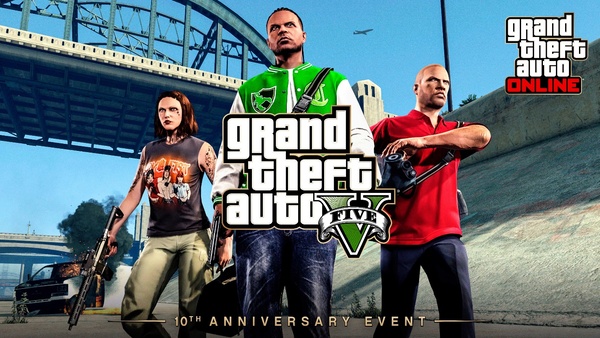Call of Duty: The Evolution of a Global First-Person Shooter Phenomenon
For over two decades,
Call of Duty has dominated the first-person shooter (FPS) genre, revolutionizing how war is depicted in video games and redefining multiplayer gaming. From its humble beginnings as a World War II simulator to its current state as a multi-platform, multi-billion-dollar juggernaut, the Call of Duty franchise is a monumental pillar in gaming history.
With a legacy that spans across multiple console generations, real-world conflicts, futuristic sci-fi settings, and even battle royale formats, Call of Duty remains one of the most impactful and influential game series of all time. This in-depth article explores the timeline, themes, gameplay innovations, and cultural footprint of the franchise—from its origins to its current form in
Call of Duty: Modern Warfare III (2023) and
Warzone.
1. The Birth of Call of Duty: A Realistic WWII Experience (2003–2005)
The Foundation of a Legend
The first
Call of Duty, released in 2003 by
Infinity Ward, focused on delivering a more cinematic and immersive World War II experience than its contemporaries. Unlike earlier shooters, which glorified lone-hero narratives, Call of Duty emphasized
squad-based combat, situational awareness, and historical authenticity.
Gameplay Revolution
It featured:
- Realistic sound design
- Iron sights for aiming (innovative at the time)
- Objective-driven missions across multiple national perspectives (American, British, Soviet)
The result was a more
narrative-rich and emotionally resonant shooter, praised for its pacing, visuals, and atmosphere.
2. Expanding the World War II Formula (2005–2007)
Call of Duty 2 and 3
Call of Duty 2 took the franchise to the next level with improved graphics and AI. It became one of the
Xbox 360’s most important launch titles.
Call of Duty 3, meanwhile, was built primarily for consoles and introduced limited multiplayer modes, which would later explode in popularity.
Core Innovations:
- Regenerating health instead of medpacks
- Expansive battlefields
- Improved AI and scripting
This period helped establish
Call of Duty’s cinematic reputation, though the series was still rooted in historical warfare.
3. Modern Warfare Changes Everything (2007–2009)
A Genre-Defining Leap Forward
Call of Duty 4: Modern Warfare in 2007 is widely regarded as one of the most influential games of all time. It shifted the franchise to a modern setting, introduced
cutting-edge multiplayer systems, and delivered a cinematic single-player campaign that tackled political and ethical complexities.
Multiplayer Mastery
Modern Warfare introduced:
- Killstreaks and Perks
- Customizable loadouts
- Progression systems with unlockables
- Game modes like Team Deathmatch, Search and Destroy, and Free-for-All
This formula set the tone for every FPS that followed. It was Call of Duty’s moment of
reinvention and mass-market explosion.
4. Building the Franchise Empire (2009–2012)
Modern Warfare 2, Black Ops, and the Golden Era
From
Modern Warfare 2 to
Black Ops (2010) and
Modern Warfare 3, Call of Duty hit a golden streak. Each release broke sales records, delivered thrilling campaigns, and expanded multiplayer capabilities.
Black Ops brought in Cold War espionage, psychological drama, and introduced the fan-favorite
Zombies Mode.
Key Innovations:
- Theater mode and Emblems (Black Ops)
- New killstreak mechanics
- Split-screen online play
- Larger multiplayer maps and prestige modes
Call of Duty became
not just a game, but a cultural event, with midnight launches and a massive online community.
5. Franchise Saturation and Risk-Taking (2013–2016)
Introducing Advanced Warfare and Infinite Settings
To avoid stagnation, Activision began to experiment.
Advanced Warfare (2014) introduced
exo-suits and verticality, while
Infinite Warfare (2016) launched into
space battles and sci-fi weaponry.
Ghosts (2013) and
Black Ops III (2015) further pushed technological themes.
Fan Reactions
These entries were polarizing. While they introduced:
- Wall-running and jet packs
- Weapon crafting
- Class-based specialists
They also distanced the franchise from its grounded roots. Many fans longed for the simplicity of boots-on-the-ground warfare, leading to
franchise fatigue.
6. A Return to Roots: WWII and Modern Reboots (2017–2019)
Call of Duty: WWII (2017)
After years of futuristic experimentation,
Call of Duty: WWII brought players back to the 1940s. It re-emphasized gritty realism, emotional storytelling, and traditional gunplay.
Modern Warfare (2019)
This was a
soft reboot of the Modern Warfare subseries. With realistic graphics, morally ambiguous storytelling, and an overhauled
Gunsmith system, it reinvigorated the franchise.
Modern Innovations:
- Cross-platform multiplayer
- Realistic night missions
- Tactical realism mode
- Ground War: A large-scale multiplayer format
7. The Rise of Warzone and Free-to-Play Dominance (2020–2022)
Warzone’s Impact
In 2020,
Call of Duty: Warzone launched as a
free-to-play battle royale. Integrated with
Modern Warfare, it offered 150-player lobbies, a
Gulag respawn system, and evolving maps.
Warzone brought millions of new players and established Call of Duty as a direct competitor to
Fortnite and
PUBG in the battle royale genre.
Integration with Annual Releases
- Warzone was fused with Black Ops Cold War and Vanguard
- Seasonal content, crossovers, and battle passes became standard
- Operators and loadouts crossed between titles
This
ecosystem approach kept players invested and expanded Call of Duty into a platform, not just a game.
8. Campaigns and Storytelling Evolution
Political Intrigue, Global Conflict, and Human Cost
The best Call of Duty campaigns blend
high-octane action with emotional weight. From Captain Price to Alex Mason, the series has created memorable characters while exploring themes of:
- Loyalty and betrayal
- PTSD and psychological trauma
- Real-world conflicts and ethical dilemmas
Notable Campaign Moments:
- “No Russian” (MW2)
- The assassination of Raul Menendez (Black Ops II)
- The Gas attack (MW 2019)
- Mason’s brainwashing revelation (Black Ops)
Call of Duty’s narrative ambition often goes underappreciated in favor of its multiplayer glory.
9. Multiplayer Evolution and Community Culture
Ranked Modes and eSports
Call of Duty’s multiplayer has evolved with:
- Skill-based matchmaking (SBMM)
- League Play and Ranked Play
- Competitive COD League tournaments
Esports and YouTubers like
Scump,
Nadeshot, and
Symfuhny helped build a culture around
COD content, montages, and clutch moments.
Social Elements
With:
- Voice chat
- Clans
- Custom lobbies and tournaments
Call of Duty became a
social platform for millions.
Conclusion: Call of Duty Is Not Just a Game—It’s a Global Institution
Call of Duty has transcended being just a video game. It’s an annual event, a cultural conversation, and for many, a lifestyle. From its humble origins in World War II to dominating the battle royale genre, COD has constantly adapted while maintaining core gameplay excellence.
As Activision looks to further integrate
AI technologies,
mobile adaptations, and even
campaign co-op modes, the future is bright. Whether you're a casual fan or a hardened multiplayer veteran, Call of Duty offers something for everyone—and it shows no signs of slowing down.






























